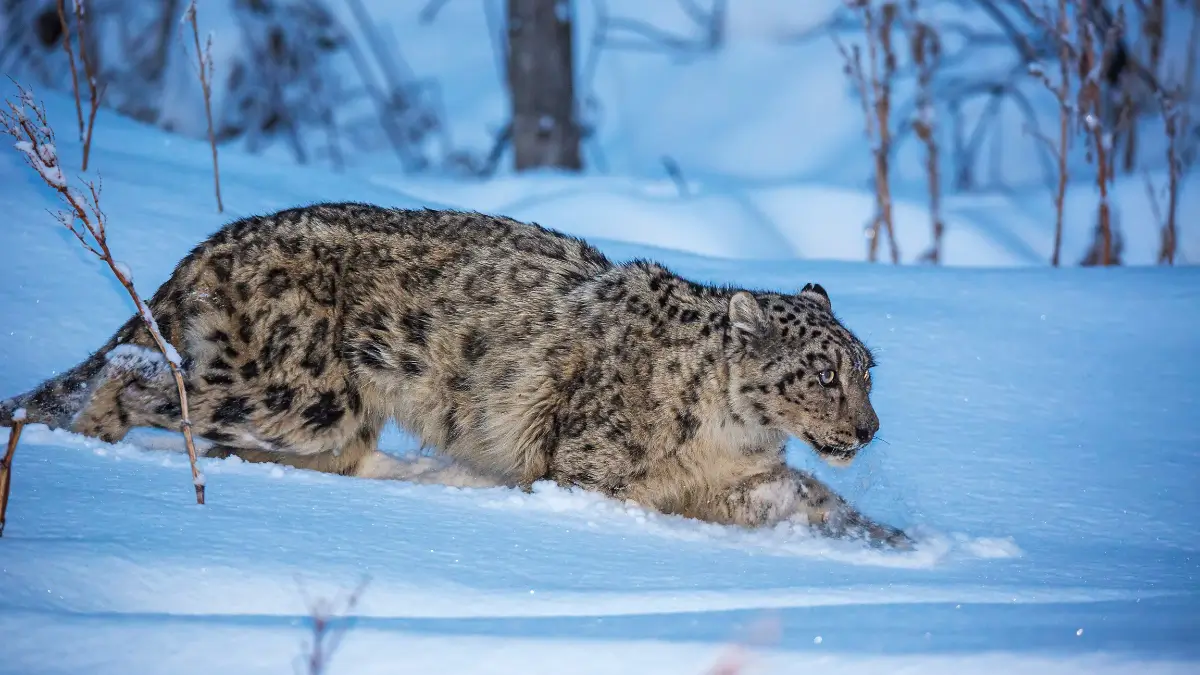Explore the top 10 countries where the world’s snow leopards live. Find out how many of these rare mountain cats remain, where they roam across Asia’s snowy peaks, and what conservation steps are being taken to protect them and their fragile habitats for the future

The snow leopard, often called the “ghost of the mountains,” is one of the world’s rarest and most beautiful big cats. Found in the cold, rocky mountains of Central and South Asia, these shy animals are known for their thick fur and incredible agility. Their population is spread across a few countries where they survive in some of the harshest climates on Earth.
Top-10 Countries with Snow Leopard Population in 2025
China is home to the highest number of snow leopards in the world, with an estimated 4,500 individuals, followed by Mongolia, India and Nepal.
Here is the list of top-10 countries with snow leopard population in 2025:
| Rank | Country | Estimated Population (in thousands) |
| 1. | China | 4,500 |
| 2. | Mongolia | 1,000 |
| 3. | India | 516-524 |
| 4. | Nepal | 301-400 |
| 5. | Pakistan | 250-420 |
| 6. | Kyrgyzstan | 250-400 |
| 7. | Tajikistan | 180-220 |
| 8. | Kazakhstan | 180-200 |
| 9. | Bhutan | 100-200 |
| 10. | Afghanistan | 200 |
China, Home to Largest Snow Leopard Population
China is home to the biggest number of snow leopards in the world, with an estimated 4,500 individuals. Most live in the Tibet Autonomous Region, Xinjiang, and Qinghai’s Sanjiangyuan area.
The vast high-altitude plateaus and mountain ranges of China make it an ideal snow leopard habitat. The government has established many protected reserves and runs anti-poaching programs to conserve these cats. Because of its large range, China plays the most crucial role in the global survival of snow leopards.
Mongolia
Mongolia has around 1,000 snow leopards, mostly found in the Altai Mountains and the South Gobi region. The country’s harsh, cold climate and rocky landscape are perfect for these cats.
Mongolia focuses on community-led conservation, involving local herders to protect snow leopards and prevent illegal hunting. This approach has helped reduce poaching and increase awareness among mountain communities.
India
India’s snow leopard population is estimated at 516–524 individuals. They live mainly in the Himalayan states of Ladakh, Himachal Pradesh, Uttarakhand, Sikkim, and Arunachal Pradesh.
Ladakh alone hosts nearly two-thirds of India’s total snow leopards. The government has launched several initiatives like Project Snow Leopard and national surveys using camera traps. These efforts help monitor and protect snow leopards from poaching and habitat threats.
Nepal
Nepal is home to about 300–400 snow leopards, mostly in Sagarmatha (Everest) National Park and Chitwan National Park.
In recent years, Nepal has completed its first-ever national snow leopard survey and developed community-based conservation programs. Locals are trained to track and report sightings, helping scientists study and safeguard this rare species.
Pakistan
Pakistan hosts around 250–420 snow leopards, primarily in Gilgit-Baltistan, the Hindu Kush, and the Karakoram ranges.
These high-altitude regions provide ideal habitats, but the species still faces threats from poaching and livestock conflicts. Conservation groups in Pakistan are working on education programs and compensation schemes for herders to reduce human-wildlife tension.
Kyrgyzstan
Kyrgyzstan has an estimated 250–400 snow leopards, mostly in the Tien Shan Mountains. The country’s rugged landscape and low human population help preserve their natural habitat.
Kyrgyzstan runs several wildlife protection projects focusing on anti-poaching patrols, habitat preservation, and awareness campaigns involving local communities.
Tajikistan
In Tajikistan, around 180–220 snow leopards live in the Pamir Mountains, also called the “Roof of the World.”
The government works closely with international conservation organizations to monitor snow leopard populations and create community-managed conservation areas. These programs promote coexistence between people and wildlife in remote mountain areas.
Kazakhstan
Kazakhstan supports about 180–200 snow leopards, mainly in the Altai and Tien Shan Mountains.
The country has made great progress in research and monitoring, using camera traps and GPS collars to study the cats’ movements. Conservationists are also working to reduce human-wildlife conflicts by protecting livestock and natural prey species.
Bhutan
Tiny Bhutan hosts between 100 and 200 snow leopards, found in areas like Jhomolhari and Sakteng Wildlife Sanctuary.
Bhutan’s focus on sustainable development and eco-tourism has made it a model for wildlife conservation. Local people play an active role in protecting snow leopards through community patrols and awareness programs.
Afghanistan
Afghanistan has around 200 snow leopards, mainly in the Hindu Kush and Wakhan Corridor. Despite challenges like political instability and limited resources, non-governmental organizations (NGOs) are helping protect these cats through awareness, research, and patrol programs.
Afghanistan’s population, though small, is vital for maintaining snow leopard connectivity across Central Asia.
DATE . Oct/26/2025
